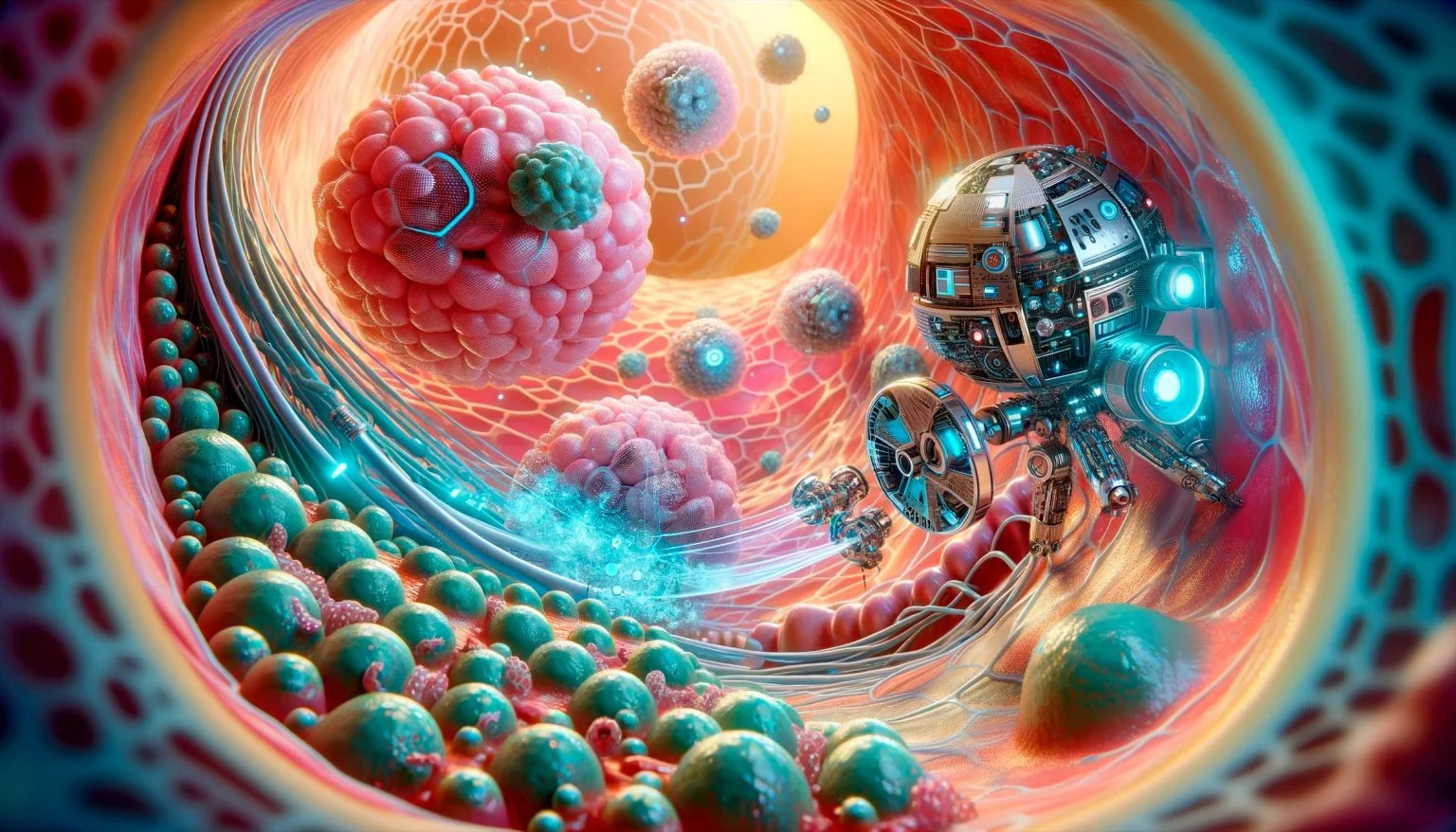Nanorobots removed 90% of cancer tumors from mice's body.
Nanotechnology, and especially nanorobots are the next-generation tools for making new surgical instruments. Doctors can detect tumors using PT scanners. And then they can inject AI-controlled nanomachines into the body. The biggest challenge in the nanotechnology and nanomachines that should replace traditional medicines is how they find their targets.
If nanomachines start to destroy the wrong tissue, the situation is dangerous. The method of how nanomachine affects to cell is mechanical or radiological. The nanomachine can cut the cell's shell open using nano-size saws. Or the nanomachine can use a laser or some acoustic system to destroy cell organelles or the mitochondria. But first, the nanomachine must find the right cells. That it can remove them.
"Transmission electron microscopy image of the nanorobots. Credit: Institute for Bioengineering of Catalonia (IBEC)" (ScitechDaily,Fantastic Voyage: Cancer Tumors Reduced by 90% Using Nanorobots)Nanorobots are like any other drone swarm. But they can operate in the body. The nanorobots are tools that can remove tumors and destroy bacteria. In some visions, nanorobots can take immune cell missions. If there are no natural immune cells in the human body. The problem with nanomachines is their electric source. And nanorobots that removed 90% of tumors from living mice.
Nanorobots are multipurpose tools. Those small machines can open blood veins, and remove poisons like carbon dioxide from the blood. The nanorobots can remove toxic waste from water by simply pumping water through carbon filters. Or they can use ultraviolet laser LED radiation to destroy bacteria. The nanomachines are rising stars in the most modern technology. The nanomachines are like all other robots.
But the big difference is that those nanorobots are far smaller. The same nanorobot can make many things, but it requires very high accuracy. Theoretically is possible to make the nanomachines. That can clean engines or water supply. And remove non-wanted cells from the human body, and open blood veins.
Nanomachines can also offer the possibility to make the most terrifying weapons in history. The same nanomachines that remove cancer can slip into the human body. And then those systems can destroy the entire body. That's why those systems are the most military-intensive technology in history.
https://scitechdaily.com/fantastic-voyage-cancer-tumors-reduced-by-90-using-nanorobots/






No comments:
Post a Comment
Note: Only a member of this blog may post a comment.